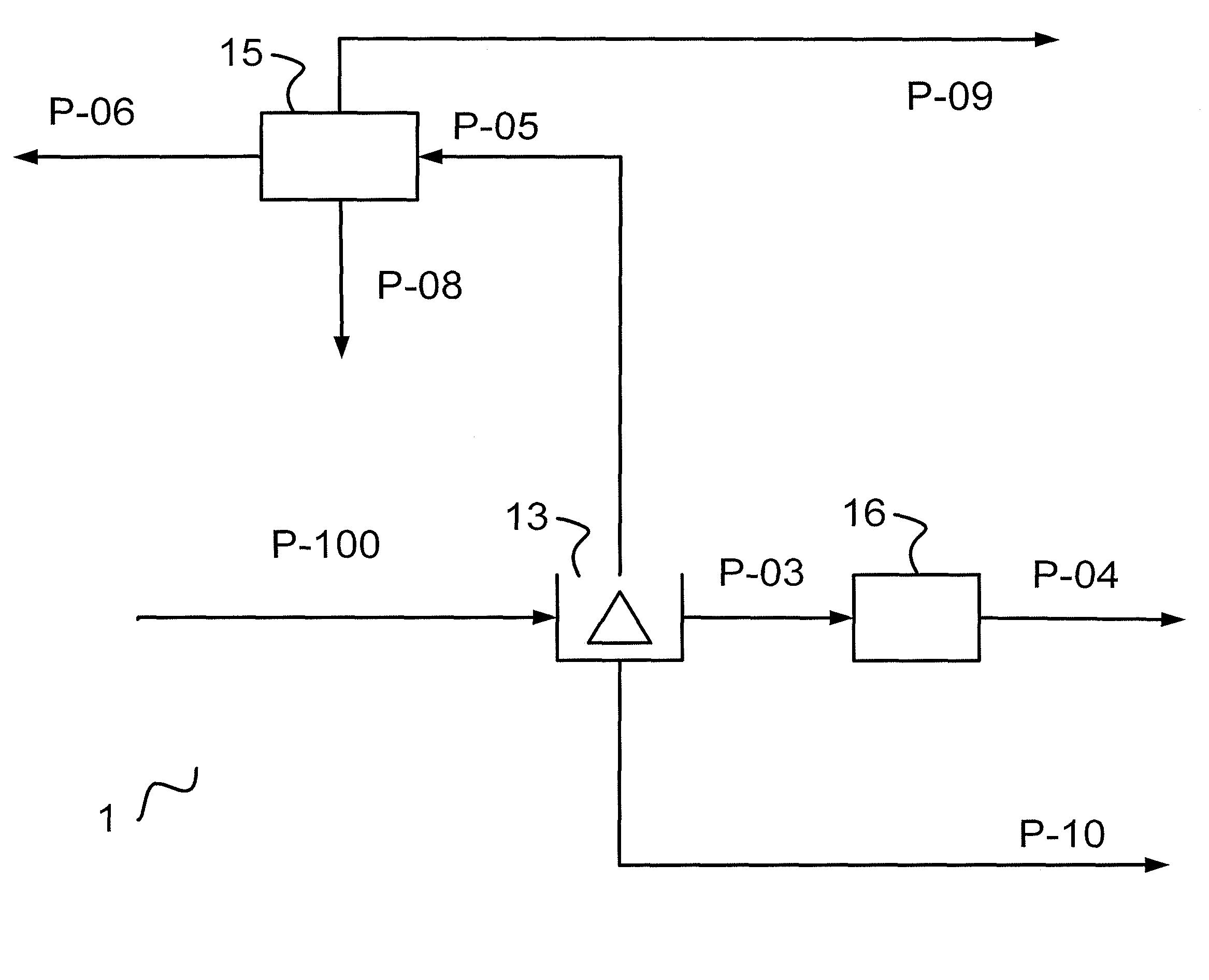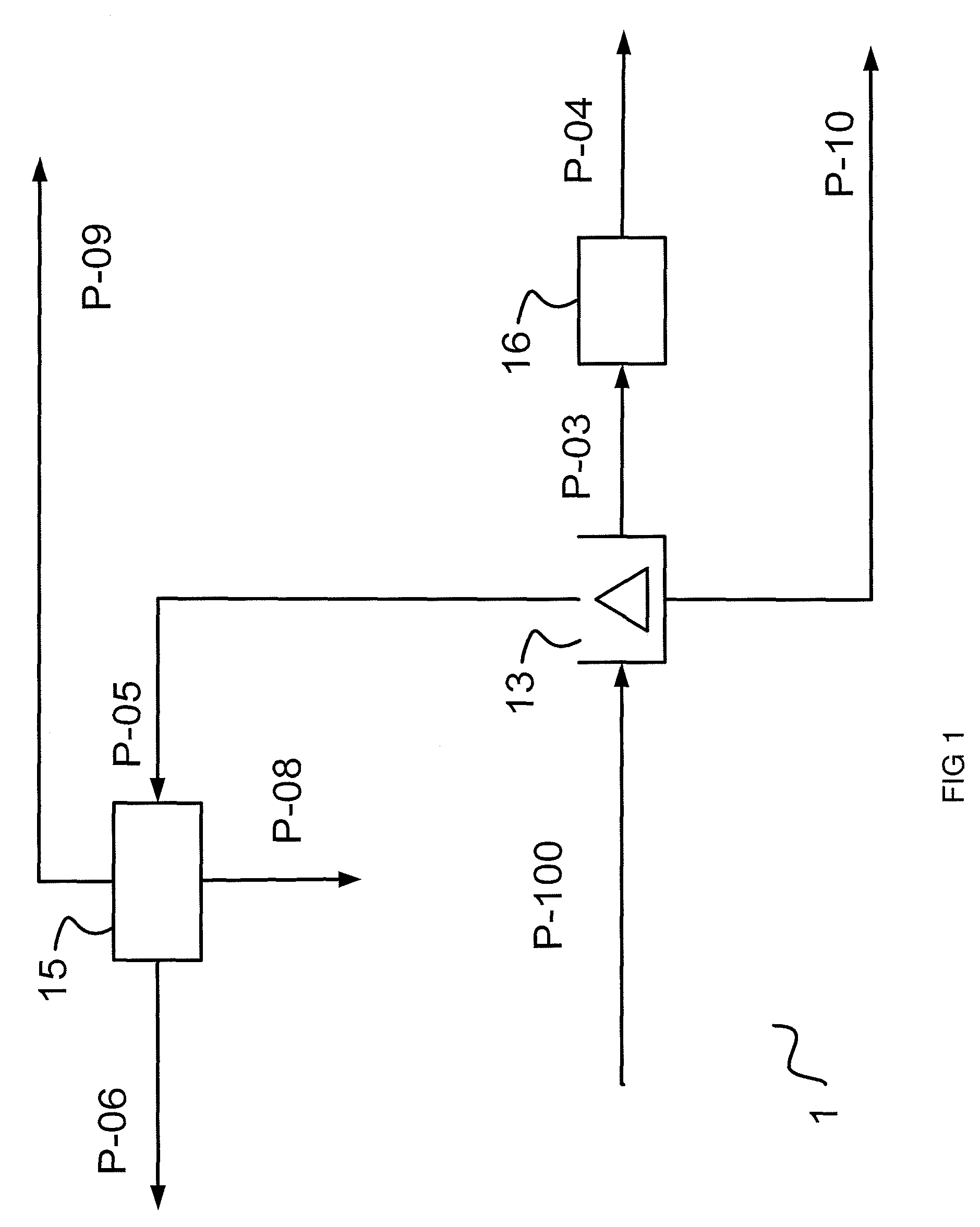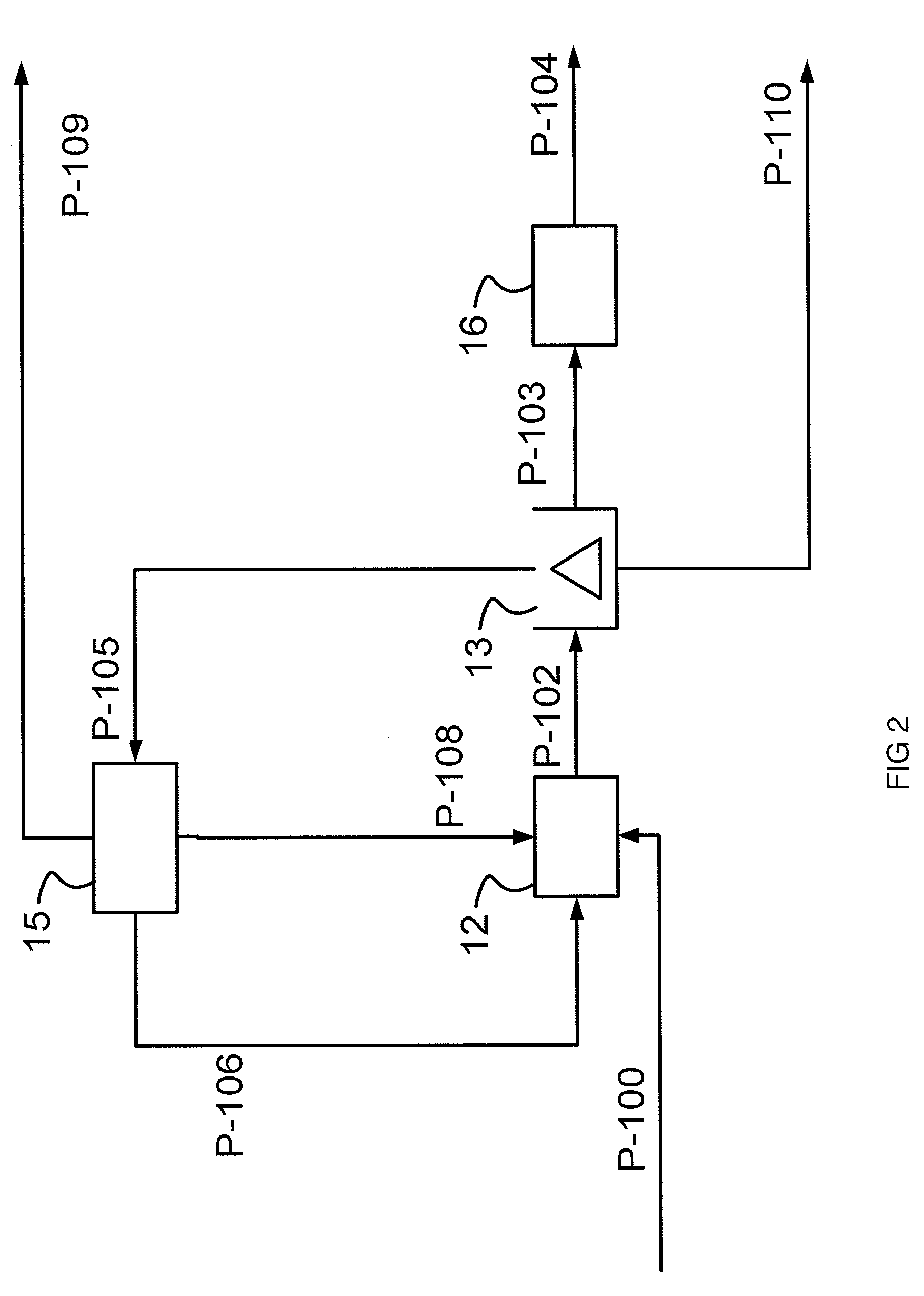Recovery of desired co-products from fermentation stillage streams
a technology of co-products and fermentation stillage, which is applied in the recovery of fatty substances, fatty-oils/fats, and separation processes, etc. it can solve the problems of increasing the operating cost of anti-foaming agents, reducing the overall capital cost, and reducing the ethanol production per mass of feed. , to achieve the effect of reducing the pressure of light phase oil materials
- Summary
- Abstract
- Description
- Claims
- Application Information
AI Technical Summary
Benefits of technology
Problems solved by technology
Method used
Image
Examples
example 1
Concentration of Stillage by Evaporation
[0185]Thin stillage was collected from the evaporator train of a Type A dry mill ethanol facility. The evaporator train was operated at a temperature of about 160 to about 195° F. The samples were taken at different points in the process, and subjected to different amounts of evaporation prior to collection. Samples were placed in a 25 mL centrifuge tube and centrifuged for about five minutes at about 3200 G. Four layers were observed in the centrifuge tubes the topmost layer was free oil. The next layer down was a light phase having a creamy / emulsified appearance and comprising oil-water-solids. The third layer down was a thin aqueous continuous phase with a small amount of other suspended material. The fourth (bottom) layer was a semisolid sludge. The percent volume of the top two layers and the bottom layer were measured. These results were graphed in FIG. 5. These data are also shown in Table 1, below. Two ratios were also calculated from ...
example 2
Oil Content Analysis in Example Stillage
[0190]Two samples of stillage streams were analyzed and evaluated for oil content, Sample A from a Type A facility and Sample B from a Type B facility. Each sample was taken at a point in the midst of the evaporator train where the process stream had a moisture level of about 82 (wt.) %, with actual values shown in Table 2. In each case, approximately 700 ml of thin stillage from a commercial dry-grind corn ethanol facility was heated to 90° C., divided into 16 individual standard 50 ml tubes, and spun for about 5 minutes at 4000 rpm (3250×g) using an Eppendorf® 5810 centrifuge equipped with an A-4-81 rotor (Eppendorf North America, Hauppauge, N.Y.). The four phases were separated, the light phases were combined and aqueous phases separated from the solids phase samples. The combined phases were re-spun several times to achieve a clean separation of the four various phases: free oil phase, light phase, aqueous phase, and solids phase. The rela...
example 3
Light Phase Post Treatment Test
[0193]A sample of light phase material was obtained from a Type A ethanol dry grind facility as follows: 1) the concentrated thin stillage was processed with a disc stack centrifuge to recover oil as the lightest of three outlet streams from the centrifuge; 2) the middle product stream was centrifuged with a decanter centrifuge, and a cream / emulsion phase was recovered and collected. Approximately 1000 ml of the collected material was fed at a flow rate of 10 ml / minute (feed material) through a heat exchanger tube (¼ inch O.D. stainless tubing, 10 ft. long, bent into a coil) placed in a hot oil bath. The outlet of the coil discharged into an open beaker with no valve or backpressure device present, with samples collected at this point. The temperature of the oil bath was adjusted from 115° C. to 150° C. and samples were collected with the initial 200 ml of processed material discarded. This technique allowed evaporation of at least a portion of the wat...
PUM
| Property | Measurement | Unit |
|---|---|---|
| temperature | aaaaa | aaaaa |
| temperature | aaaaa | aaaaa |
| temperature | aaaaa | aaaaa |
Abstract
Description
Claims
Application Information
 Login to View More
Login to View More - R&D
- Intellectual Property
- Life Sciences
- Materials
- Tech Scout
- Unparalleled Data Quality
- Higher Quality Content
- 60% Fewer Hallucinations
Browse by: Latest US Patents, China's latest patents, Technical Efficacy Thesaurus, Application Domain, Technology Topic, Popular Technical Reports.
© 2025 PatSnap. All rights reserved.Legal|Privacy policy|Modern Slavery Act Transparency Statement|Sitemap|About US| Contact US: help@patsnap.com



